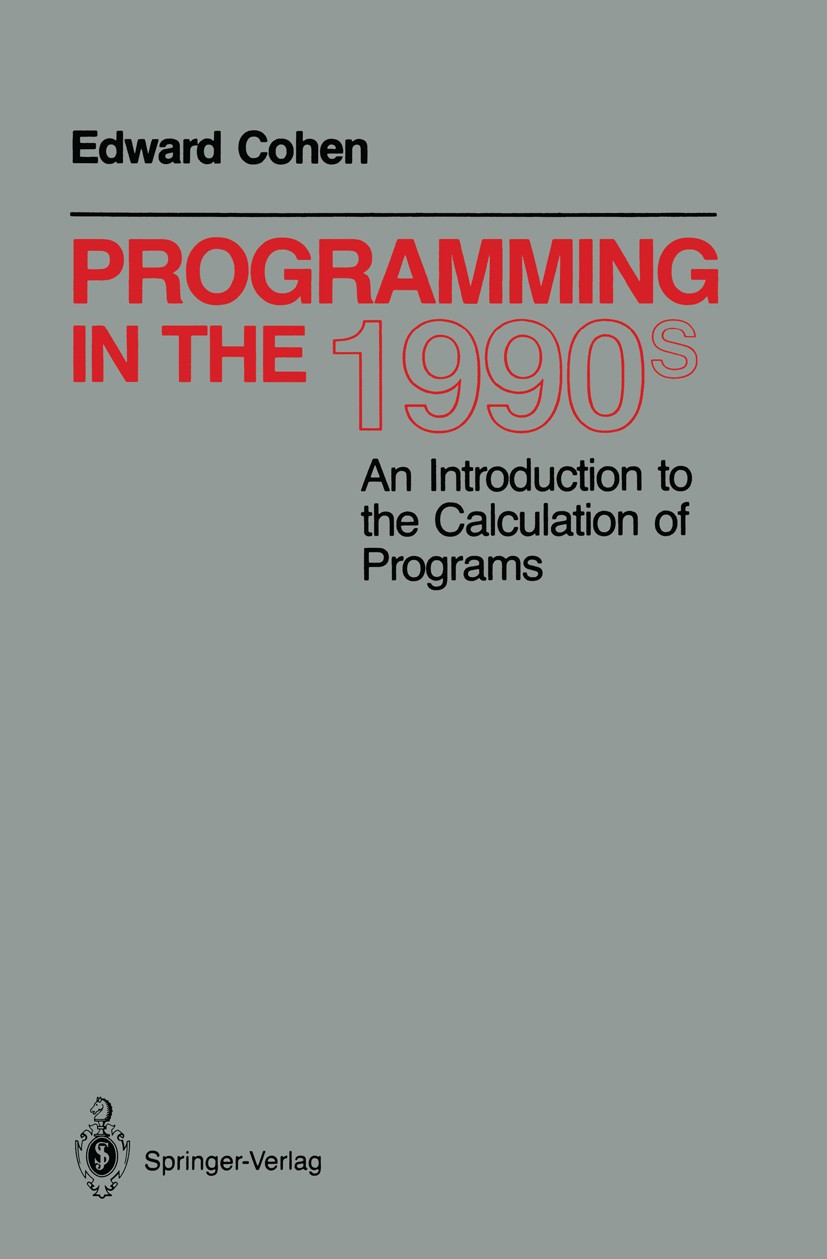| 書目名稱 | Programming in the 1990s | | 副標(biāo)題 | An Introduction to t | | 編輯 | Edward Cohen | | 視頻video | http://file.papertrans.cn/761/760190/760190.mp4 | | 叢書名稱 | Monographs in Computer Science | | 圖書封面 |  | | 描述 | Programming is a fascinating and challenging subject. Unfortunately, it is rarely presented as such. Most often it is taught by "induction": features of some famous programming languages are given operational meaning (e.g. a loop "goes round and round"), a number of examples are shown, and by induction, we are asked to develop other programs, often radically different from the ones we‘ve seen. Basically we are taught to guess our programs, and then to patch up our guesses. Our errors are given the cute name of "bugs". Fixing them becomes puzzle-solving, as does finding tricks that exploit or avoid poorly designed features of the programming language. The entire process is time-consuming and expensive. And even so, we are never quite sure if our programs really work in all cases. When approached in this way, programming is indeed a dull activity. There is, however, another approach to programming, an approach in which programs can be developed reliably, with attention to the real issues. It is a practical approach based on methodically developing programs from their specifications. Besides being practical, it is exciting. Many programs can be developed with relative ease. Problems w | | 出版日期 | Textbook 1990 | | 關(guān)鍵詞 | algorithms; design; language; programming; programming language | | 版次 | 1 | | doi | https://doi.org/10.1007/978-1-4613-9706-9 | | isbn_softcover | 978-0-387-97382-1 | | isbn_ebook | 978-1-4613-9706-9Series ISSN 0172-603X Series E-ISSN 2512-5486 | | issn_series | 0172-603X | | copyright | Springer-Verlag New York Inc. 1990 |
The information of publication is updating

|
|
 |Archiver|手機(jī)版|小黑屋|
派博傳思國(guó)際
( 京公網(wǎng)安備110108008328)
GMT+8, 2025-10-9 02:10
|Archiver|手機(jī)版|小黑屋|
派博傳思國(guó)際
( 京公網(wǎng)安備110108008328)
GMT+8, 2025-10-9 02:10


